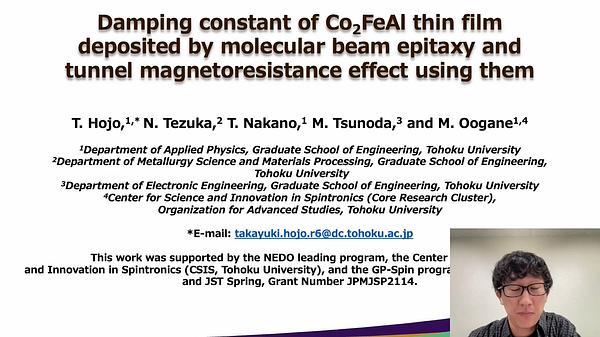
Premium content
Access to this content requires a subscription. You must be a premium user to view this content.

technical paper
Compensation of anisotropy in spin Hall systems for realizing neuromorphic applications
Spintronic nano-oscillators can provide energy efficient solution to realize neuromorphic applications. They have been shown to emulate biological neurons and perform
machine learning tasks with an accuracy similar to that of state-of-the-art neural networks 1. Moreover, they can serve as synapses when operated as a spin diode 2. In this context,
systems with compensated anisotropy could offer key advantages. For instance, an easy plane geometry achieved by compensating the anisotropy can produce spikes as an output, a
phenomenon, recently demonstrated via micromagnetic simulations for a spin Hall nano-oscillator (SHNO) geometry 3. Moreover, an SHNO with a compensated or near zero effective
magnetization would require low operating current and exhibit extremely low phase noise, making it suitable to realize large chain of synchronized neurons 4. A synapse or a spin diode
with a compensated anisotropy would also resonate at a relatively fixed frequency, which is an essential requirement for frequency multiplexing and transmitting data from the SHNO
based neurons. This motivates us to study spin Hall systems with compensated anisotropy. Here, Pt/CoFeB based thin films are used as the spin Hall system. The anisotropy has been tuned
by varying the thickness of the magnetic layer. The thin films have been fabricated into micro-strip waveguides and nano-constrictions to study the magnetization dynamics in these
systems which emulate the behaviour of an SHNO. Spin-torque ferromagnetic resonance (ST-FMR) technique is employed to evaluate the effective magnetization of the fabricated devices.
The measurements indicate the fabricated devices achieve compensation when the starting thin films have perpendicular anisotropy, implying the effects of post-fabrication anisotropy
reduction and shape anisotropy. Different nano-constriction geometries have been studied to evaluate the effect of shape on the compensation point. We also demonstrate frequency
tunability of the nano-synapses and thereby its weights by anisotropy modification. We then propose a non-volatile method to control the synaptic weights via electric fields which would
enable realization of compact and energy efficient neuromorphic chips.
References
1 J. Torrejon et al., “Neuromorphic computing with nanoscale spintronic oscillators”, Nature 547, 428 (2017).
2 N. Leroux et al., “Radio-Frequency Multiply-and-Accumulate Operations with Spintronic Synapses”, Phys. Rev. Appl. 15, 034067 (2021).
3 D. Markovic et al., “Easy-plane spin Hall nano-oscillators as spiking neurons for neuromorphic computing”, Phys. Rev. B 105, 014411 (2022).
4 A.A. Awad et al., “Long-range mutual synchronization of spin Hall nano-oscillators”, Nat. Phys. 13, 292 (2017).

